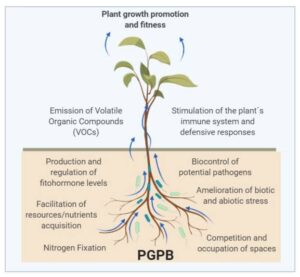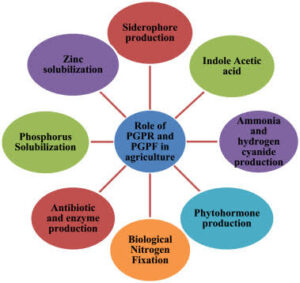Back to: MICROBIOLOGY 500 LEVEL
Welcome to class!
My brilliant scientist, welcome back! It’s always exciting to learn with you. Today, we’re going to talk about something that’s very close to home—Biofertilizers and Biopesticides. Whether you grew up in a city like Lagos or in a farming town like Gboko or Iseyin, you’ve probably seen crops growing in fields or even in your own compound. But did you know that science can help plants grow healthier without relying on too many chemicals?
Let’s break it down simply, using examples that feel real and Nigerian.
Biofertilizers And Biopesticides
What Are Biofertilizers?
Think of biofertilizers as natural helpers for the soil. They are made from living organisms—like bacteria, fungi, or algae—that improve the nutrients in the soil and help plants grow better.

Instead of adding chemical fertilisers like NPK, which can be expensive and harmful to the environment if overused, biofertilizers boost the soil’s natural power using friendly microbes.
Common types of biofertilizers:
Rhizobium: Found in the roots of legumes like beans and groundnuts. They help “fix” nitrogen from the air into the soil.
Azospirillum and Azotobacter: Used with maize and sorghum.
Blue-green algae: Used in rice farms to increase nitrogen levels naturally.
Real-life Nigerian example: A farmer in Jos growing beans can apply Rhizobium inoculants to the seed before planting. This reduces the need for artificial fertilisers and helps the soil stay fertile for future use.
What Are Biopesticides?
Now imagine you’re a tomato farmer in Ogun State, and insects keep eating your crop. Instead of spraying strong chemicals, you use biopesticides, which are made from natural materials like bacteria, fungi, or even plant extracts.
Biopesticides don’t harm the environment or your health. They target only the pests that damage the crops—just like a smart sniper, not a bomb.
Examples of biopesticides:
Bacillus thuringiensis (Bt): A bacteria that kills caterpillars eating maize leaves.
Neem extract: From the neem tree (dogonyaro), used to keep insects away from crops.

Trichoderma fungi: Protects plants from harmful soil fungi.
Why They Matter in Nigeria:
Safe for people and the environment
Cheaper in the long run
Maintain soil health
Support sustainable agriculture
Summary
- Biofertilizers use natural microbes to enrich the soil and help plants grow.
- Biopesticides are natural alternatives to chemical pesticides, controlling pests safely.
- These tools are affordable, eco-friendly, and ideal for Nigeria’s smallholder farmers and long-term food security.
Evaluation
- What is the main role of biofertilizers in agriculture?
- Give one example of a biopesticide and what it does.
- Mention two advantages of using biofertilizers and biopesticides in Nigerian farming.
Fantastic work today, my future change-maker! You’ve just learned how nature and science can work hand-in-hand to support healthy farming in Nigeria. As we move towards greener, smarter agriculture, learners like you will lead the way. Stay passionate, stay grounded, and remember—Afrilearn is proud to be your learning partner. See you next class!
